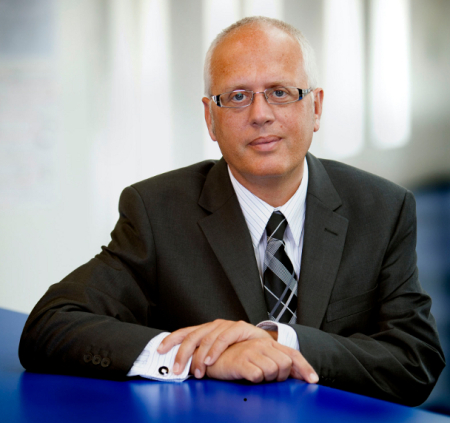Tax is tax: How HMRC figures it can save £160m and overhaul hardware at no cost

Taxman's CIO Phil Pavitt on its bid to cut tech costs by £161m each year...

HMRC CIO Phil Pavitt said the department will renew its systems and infrastructure "for hardly any capital investment"Photo: HMRC
HM Revenue & Customs (HMRC) is planning to reduce IT running costs by some £160m each year and renew its infrastructure at virtually no capital cost, the department's CIO said today.
By April 2012, under a programme known as Aurora, HMRC aims to cut IT costs to the tune of £161m per year by shutting down unnecessary IT systems and applications and moving applications onto new platforms.
The programme will help the department restructure its IT so it relies on no more than 13 business-critical systems and reduce the number of apps it uses from about 900 to 150, HMRC CIO Phil Pavitt told The Crown and Suppliers: A New Way of Working conference today.
Much of the work restructuring the department's vast IT estate - comprised of some 6,000 servers, 80,000 desktops and 7,500 laptops - will be funded by savings from shutting down old applications and systems, he said.
"[For example] we had seven versions of SAP apps for our tax-gathering activities. Now we are focusing all of our tax-gathering activity through one version - SAP Safe," he said.
Similarly, the department has reduced the number of business intelligence systems it uses from 31 down to just one, according to Pavitt.
When reducing IT systems, HMRC is keeping costs down by choosing to move to a single system that it already uses, rather than introducing a new one, he said.
The resulting reduction in HMRC's IT footprint, the CIO said, will "give us a completely rebuilt infrastructure and network within four years for hardly any capital investment".
IT costs have also been kept down by the need for any proposal for new technology spend to be matched by an equivalent saving on IT being made elsewhere within the department.
According to Pavitt, much of the IT change is being enabled by a realisation within the department that the work that takes place across large swathes of the organisation is broadly similar - an acceptance that "tax is tax".
The understanding has allowed the department to move from using bespoke computer systems to off-the-shelf packages.
"In one of the department's major areas we have re-engineered processes and gone from 90 per cent complex, bespoke and unique SAP solution onto vanilla SAP and lowered the costs by 81 per cent," he said.
In order to realise the savings, the CIO had to overcome a cultural reluctance within HMRC to let go of old systems.
"You say, 'Let's turn a system off' and you cannot imagine the consternation it brings," he said.
"[I would be told] 'This is a tax disaster recovery system, we haven't used it for 15 years but we keep it just in case'. We have IT that goes [all the way back] to the 1960s."